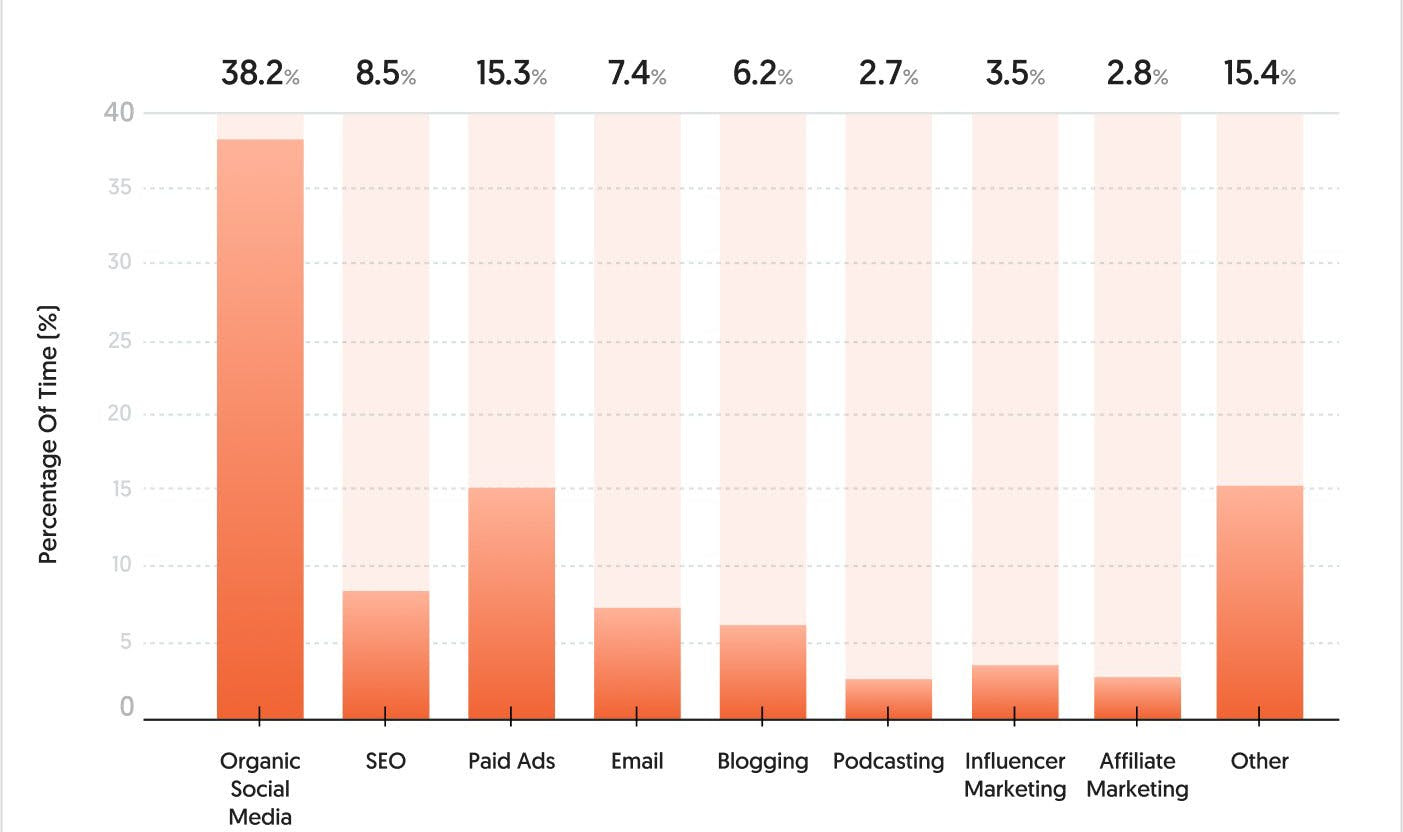
You’re scrolling through your business’s social media feed. Likes, shares, and comments are flooding in.
It feels great, doesn’t it?
But then, the excitement fades as you check your sales figures and… crickets. The disappointment is palpable.
In recent years, businesses have been told that social media is the holy grail of marketing. It’s where your customers are, so that’s where you need to be, right?
As a result, companies are pouring thousands into crafting the perfect posts, running ads, and chasing followers.
But here’s the challenge: despite significant investment, many businesses struggle to measure and realise tangible returns from their social media efforts.
The complex nature of social media engagement and the difficulty of directly attributing sales to social media activities make it challenging for businesses to assess their ROI accurately in this space.
In this post, we’ll unpack the social media paradox. We’ll look at why businesses invest heavily in social media, what the data says about its impact, and how to approach it wisely.
The Social Media Spending Trap
Did you know that social media spending has been skyrocketing?
According to industry reports, businesses are allocating more of their marketing budgets to social media than ever before. It’s not uncommon for companies to spend thousands of dollars monthly on social media management, content creation, and advertising.
In fact, according to Sprout Social, running a social media profile and creating a content calendar can cost a brand anywhere from $500 to $10,000 per month. This significant investment covers everything from hiring social media specialists to paying for content creation and using third-party management tools.
These figures highlight the substantial financial commitment many businesses are making to social media marketing. With costs like these, it’s crucial for businesses to carefully consider their social media strategy and ensure they’re getting a good return on their investment.
Despite this significant investment, the effectiveness of social media marketing is questionable.
According to a survey conducted by marketing expert Neil Patel, which involved 118 businesses across different industries, a startling trend emerged:

Patel, N. (2024). What Marketing Channels Are Companies Spending Their Time On. https://x.com/neilpatel/status/1764045034524119426
The majority of these businesses prioritised organic social media in their marketing efforts. However, when analysing the ROI for different marketing channels, Patel’s team found that organic social media actually delivered the worst results.

Patel, N. (2024). What Percentage Of Your Revenue Does Each Marketing Channel Drive. https://x.com/neilpatel/status/1764045034524119426
This finding highlights the paradox at the heart of social media marketing: despite being one of the most popular and heavily invested-in channels, it often fails to deliver proportional returns.
This trend is further supported by HubSpot’s 2024 State of Marketing Report. Though businesses make hefty investments in social media, they often find that it doesn’t deliver the highest ROI.
According to the report, the top channels with the highest ROI are:
- SEO: 16%
- Social media shopping tools: 16%
- Paid social (not organic): 14%
- Email marketing: 14%
- Content marketing: 14%
The ROI Reality Check: What You’re Really Getting from Social Media
So, if businesses are spending big on social media but not seeing proportional returns, what’s really going on?
Let’s break it down with some hard data.
Marketing expert Neil Patel conducted a comprehensive study of 10,000 websites, and the results are eye-opening:
- Organic social media traffic accounts for only 6.38% of website traffic on average.
- Organic social media traffic for sites with conversion tracking led to just 1.59% of sales.
- The trend isn’t improving – organic social media traffic is declining by 1.98% per quarter on average.
These statistics paint a stark picture of social media’s actual impact on business results. While social media excels at brand awareness, these numbers suggest it’s falling short when it comes to driving traffic and, more importantly, sales.
So what’s going on here?
The issue lies in the nature of social media itself. People scrolling through their feeds are often in ‘entertainment mode’, not ‘shopping mode’. They might like your post and maybe even share it, but that doesn’t mean they’re ready to buy.
This doesn’t mean social media is worthless. Remember, it’s excellent for brand awareness. But if you expect it to be your primary sales driver, you might be setting yourself up for disappointment.
The key takeaway?
Social media should be part of a balanced marketing diet, not the main course. In our next section, we’ll discuss how to rethink your social media strategy to align with its strengths and avoid the common pitfalls.
Rethinking Your Social Media Strategy: Finding the Right Balance
Given what we’ve learned about the social media paradox, you might be tempted to abandon ship altogether.
But hold on – that’s not the answer either.
Instead, it’s time to rethink how social media fits your marketing strategy.
Here’s how to approach social media more effectively:
1. Reassess Your Budget
If you’re spending a large chunk of your marketing budget on organic social media, it might be time to consider reallocating spend to other channels such as SEO or paid ads.
2. Focus on Quality Over Quantity
Instead of trying to be everywhere and post constantly, focus on creating high-quality content that truly resonates with your audience. One great post a week is better than daily posts that no one engages with.
3. Use Social Media for Its Strengths
Remember, social media excels at brand awareness. Use it to showcase your brand personality, share behind-the-scenes glimpses of your business, and engage with your community. Just don’t expect it to be your primary sales channel.
4. Diversify Your Marketing Efforts
Don’t put all your eggs in the social media basket. Explore other channels like email marketing, SEO, or Google Ads. These often provide a better return on investment for many businesses.
5. Track the Right Metrics
Instead of focusing solely on likes and followers, pay attention to metrics that actually impact your bottom line. How many website visits are you getting from social media? How many of those turn into leads or sales?
6. Consider Your Business Type
Some businesses naturally perform better on social media than others. Visually appealing products or services (like fashion or fitness) might see more success than, say, a plumbing service. Consider how well your business type aligns with social media’s strengths.
Conclusion
As we’ve explored, social media marketing isn’t as straightforward as it might seem. While it’s a powerful tool for brand awareness, its effectiveness in driving direct sales and ROI often falls short of expectations.
Ready to Optimise Your Marketing Strategy?
Don’t let the social media paradox hold your business back. It’s time to create a balanced, data-driven marketing approach that truly drives results.
Need help navigating this complex landscape?
We’re here to assist.
Our team of marketing experts can help you craft a strategy that maximises your ROI across all channels, ensuring you’re not overspending on social media at the expense of more effective methods.
Contact Greg O’Rourke, CEO of Dojo Web Group, today for a free digital marketing consultation. Dojo Web Group will assess each marketing channel and provide expert guidance on the most effective strategies to drive real, measurable growth for your business.






